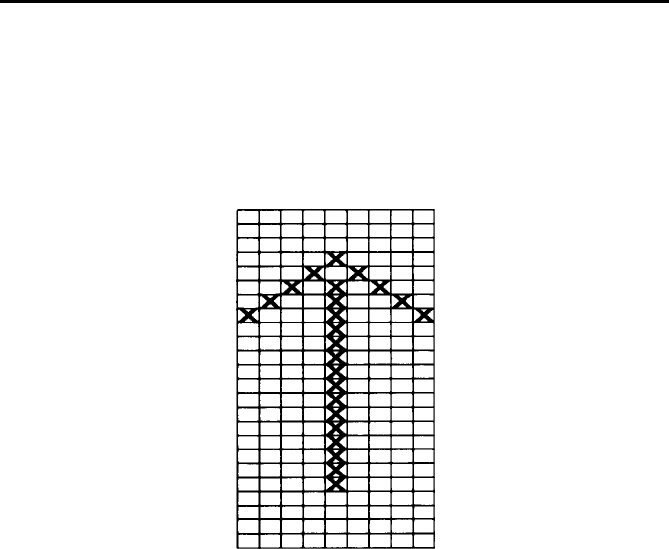
User-Defined Characters
Defining Your Own Characters
The first step in defining characters is to place the dots on a grid
just as you want them to print. The examples here, like the ones in
the graphics section, use an x to represent each dot. In the
illustration below you see a draft grid with a simple user-defined
character planned on it.
Now you translate the dot pattern you’ve created on paper to a
numeric format so you can send the information to the LQ. Every
dot has an assigned value. Each vertical column (which has a
maximum of 24 dots) is first divided into three groups of eight dots.
Each group of eight dots is represented by one byte, which consists
of eight bits. Hence, one bit represents each dot.
Data numbers
The bits within each byte have values of 1, 2, 4, 8, 16, 32, 64,
and 128. In the vertical column of dots, the bits are arranged so
that the most significant bit (which has a value of 128) is at the top
and the least significant bit (which has a value of 1) is at the
bottom.
4-22


















